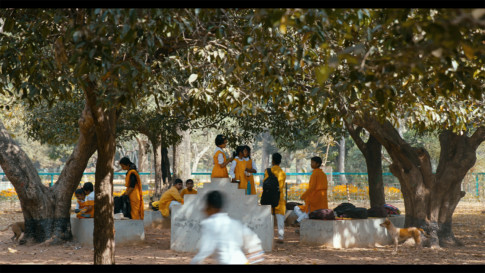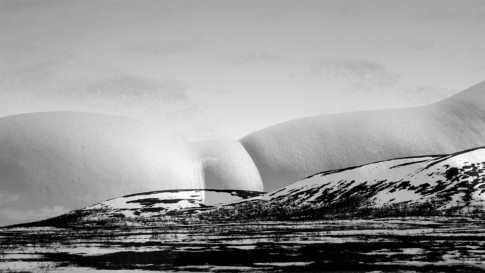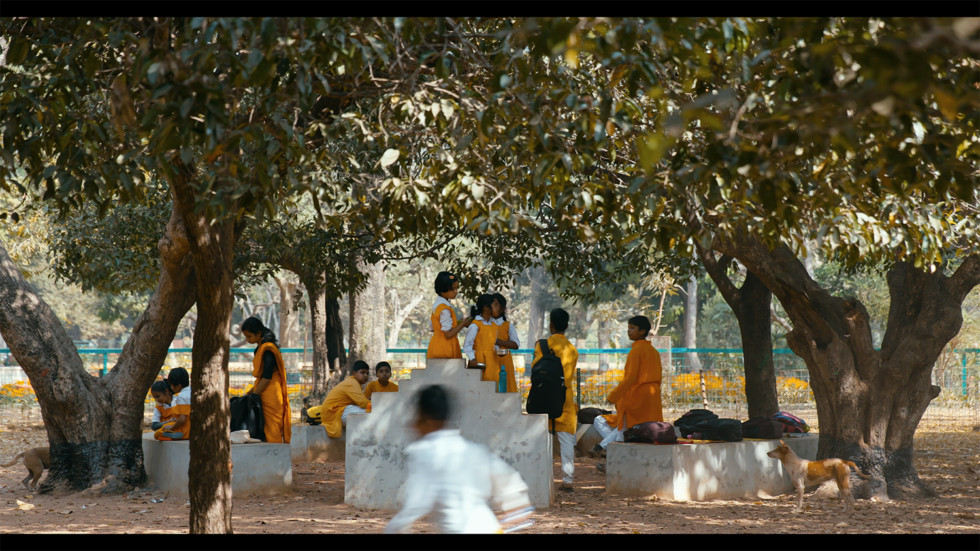
The Otolith Group, O Horizon, 2018 © Courtesy of The Otolith Group and LUX, London
About the artworks
The Snow Monkeys of Texas: Do snow monkeys remember snow mountains?
Shimabuku, b. 1969 in Japan
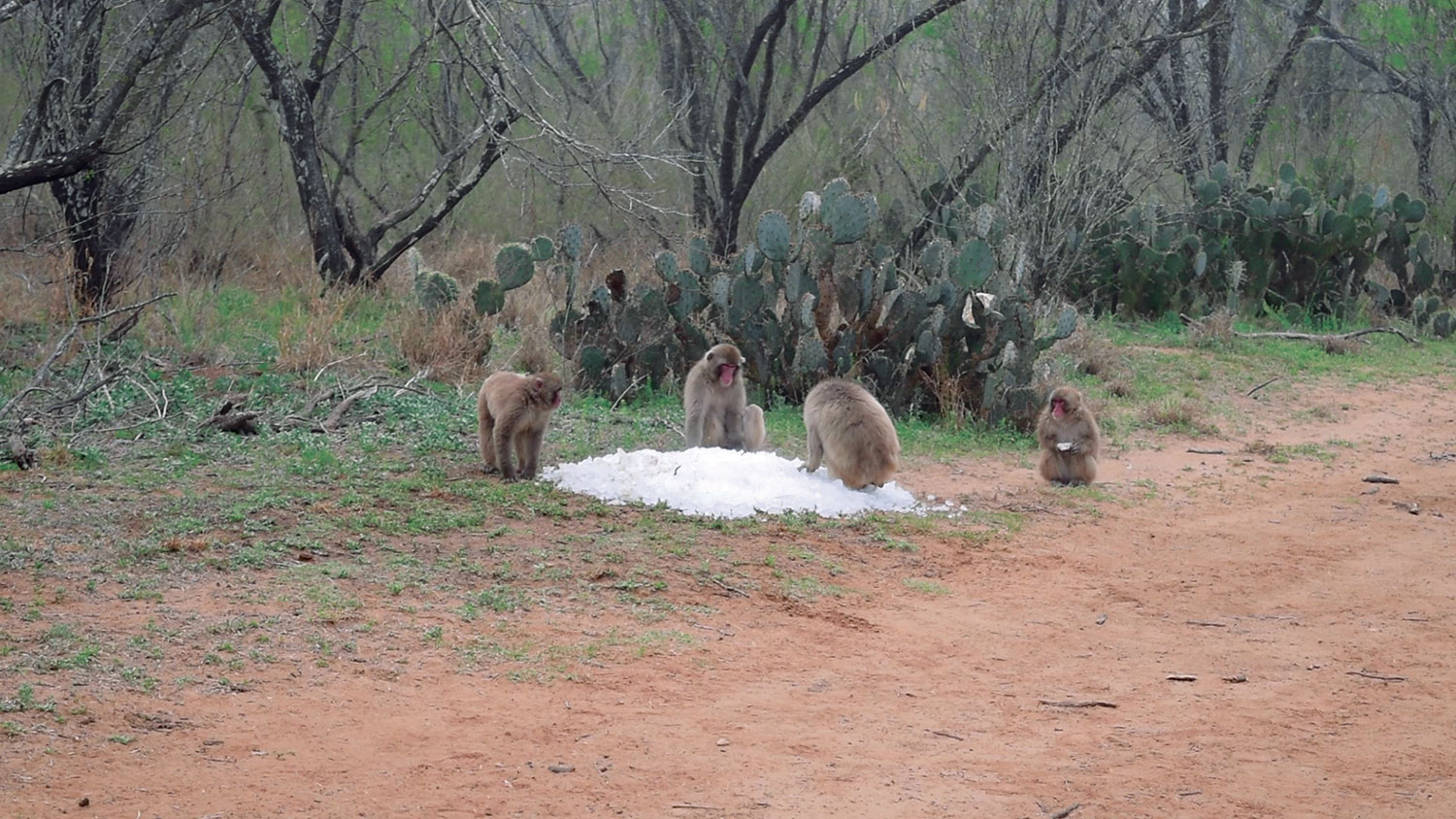
In the video The Snow Monkeys of Texas… we get to observe a group of Japanese snow monkeys which now live in Texas Desert Sanctuary. In 1972 the monkeys were moved from their natural habitat among snow covered mountains in Kyoto, Japan and were placed in the Texan desert among cacti and rattlesnakes.
The Japanese artist Shimabuku heard of the monkeys´ faith and became interested in the story as a story of migration. He wondered whether the younger generations of monkeys could possibly have inherited sensuous memories of their ancestors’ natural surroundings. In 2016 Shimabuku got the opportunity to visit the monkeys in Texas and decided to bring with him a pile of ice – a natural feature of their habitat amongst the mountains. In the video we see the monkeys curiously approaching the small mountain of ice, placed amongst the sand and cacti.
The Snow Monkeys of Texas… is not to be understood as a scientific study of the monkeys´ adaptability to a warmer climate. Rather, the work offers a tragicomic metaphor for humanity’s uncertain future in times of climate change. To what extent will future generations experience the natural landscapes that have greatly shaped our languages and cultures?
Electroacoustic aspects of human and plant
Christine Ödlund, b. 1963 in Sweden
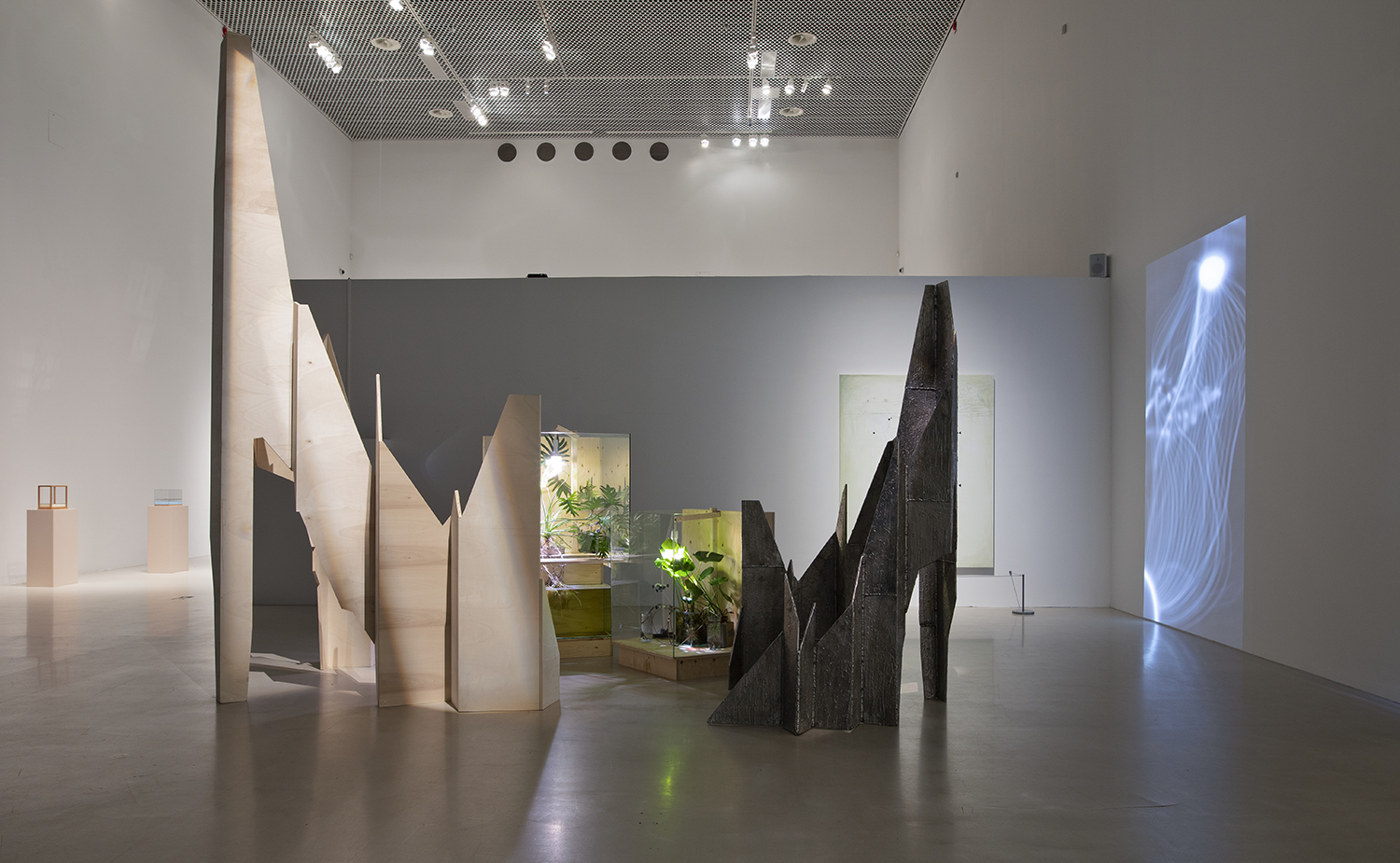
An interesting cross breeding takes place within the practice of Christine Ödlund, involving science, meta physics and electroacoustic music. At center stage is the artist’s long standing interest in intelligence and communication amongst plants.
Theosophy, with its understanding of science and metaphysics as complementary, has been an important source of inspiration. Another is the scientist Nikola Tesla’s (1856–1943) research on electricity. Tesla’s attempts to decode electric brain waves, corresponds in interesting ways with Ödlund´s own endeavor to bridge language barriers between human and plant.
The large sculptures forming the hub of the installation Electroacoustic aspects of human and plant have shapes recalling sound graphs or electromagnetic waves. In an accompanying video, the artist has connected herself to stinging nettles via a so-called Tesla sphere and establishes an electromagnetic form of communication. The work also includes living plants that are exposed to high frequency clicking sounds, with microphones mounted to record their possible responses.
Christine Ödlund has for many years painted and drawn graphic scores * that portray chemical life processes and acoustic communication amongst plants. The paintings on display exemplify how the artist has increasingly started to utilise pigments from the plants she examines. Taken to gether, Electroacoustic aspects of human and plant can be understood as poetic attempts to access non-human intelligence.
* Graphic scores are a form of music notation that shows, for example, the
movements and rhythm of a melody.
Forest Law
Ursula Biemann, b. 1955 in Schweiz. Paulo Tavares, b. 1980 in Brazil

This collaborative project draws from research carried out in the oil-and-mining frontier in Amazonia – one of the most biodiverse and mineral-rich regions on Earth, currently under pressure from the dramatic expansion of large-scale extraction activities. Forest Law enters in conversation with parts of the tropical forest zoned for this sort of impact. It follows a series of landmark legal battles unfolding in the Ecuadorian Amazon, where nature has been declared a rights-bearing subject.
A particularly paradigmatic trial in which the forest was brought to Court for the first time, has recently been won by the indigenous people of Sarayuku based on their cosmology of the Living Forest. Forest Law dwells within this territory. The project emerges from dialogues – between the authors and their practices, the camera and the forest, and, most importantly, with the many people whom the duo encountered and interviewed while traveling through Amazonia in November 2013.
Forest Law attempts to forge ties that bridge, disrupt, and slip through the partitions that define our systems of knowledge and the modes by which we perceive, represent, and relate to the world of which we are part.
Forest Law has been commissioned by the Land Grant of Broad Art Museum, State University of Michigan and opened there in August 2014.
Curiosity Cabinets: You, me, rock, mountain: commodities of the quantified universe
Hanna Ljungh, b. 1974 in Washington D.C.
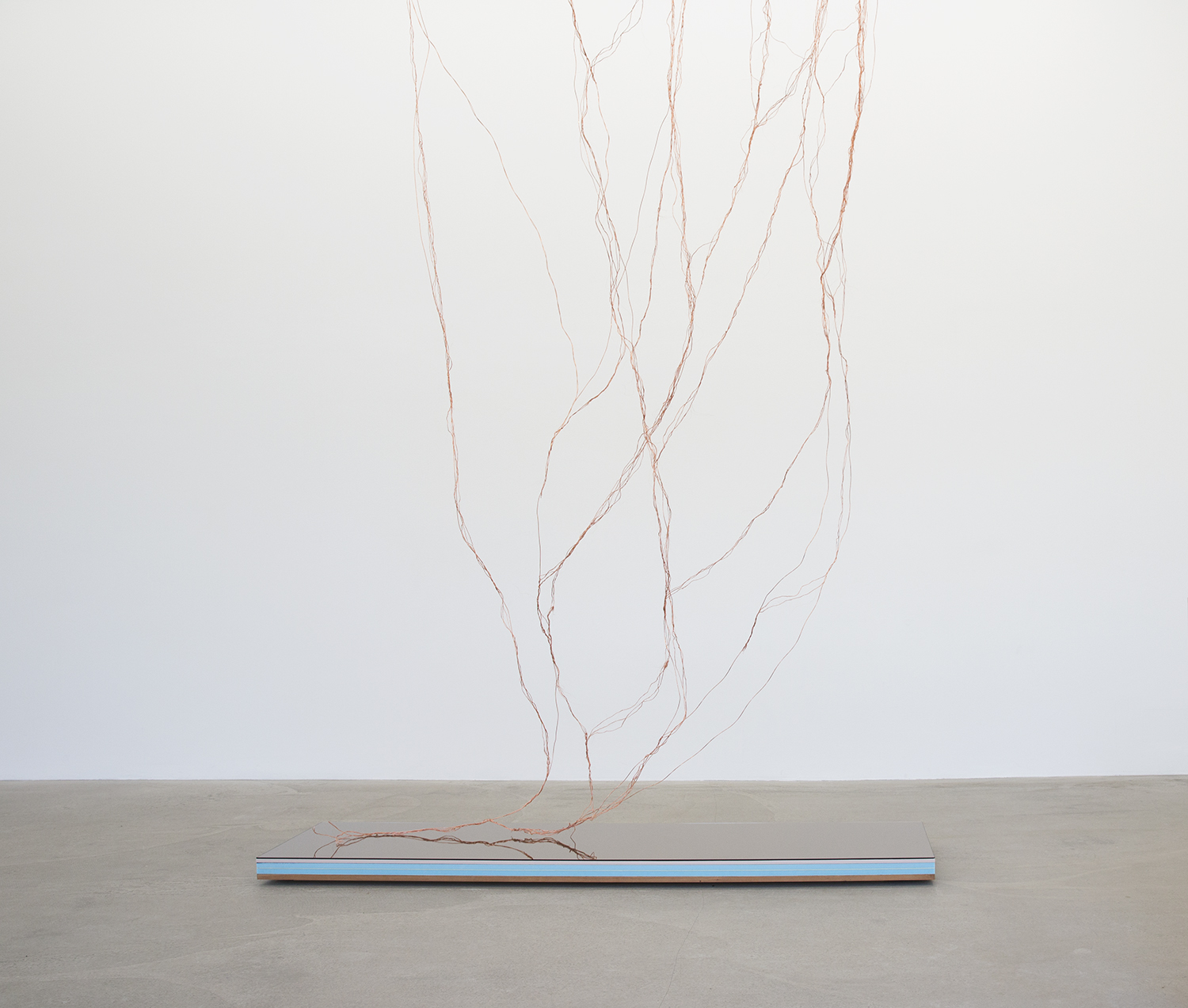
Cabinets of curiosities leads the mind to the Renaissance’s collections of exotic objects. Hanna Ljungh’s cabinets however, presents neither stuffed animal heads nor unicorn horns. Instead, they contain metals and minerals extracted for manufacturing batteries, information transfer cables, vehicles and various building elements.
While industrially removed from the mountains, these metals and minerals are also natural building blocks of the human body. Hanna Ljungh’s largest cabinets contain the same amount of iron and copper that the entire population of Kiruna and Gällivare jointly carry in their limbs. Her smaller ones correspond to the levels in an individual.
Curiosity Cabinets: You, me, rock, mountain… thus highlights a relationship between man and mountain. It also sheds light on how practices of quantification and calculation, crucial in industrial operations to achieve maximum efficiency and profit, are increasingly directed at our own bodies. In poorer parts of the world, this rationalisation may involve disciplining the worker’s body. Among the more affluent population, it has become part of a performance-oriented lifestyle. The Quantified Self movement being an extreme example of the latter.
Hanna Ljungh’s newest cabinets contain molybdenum and boron. Some scientists claim that these semi-metals contributed to the emergence of life on earth and that they arrived in meteorites from Mars as life-giving seeds. Their presence in the exhibition invites us to reflect on our long-distance cosmic ties, in a common infinity.
EANA
Hilde Skancke Pedersen, b. 1953 in Norway
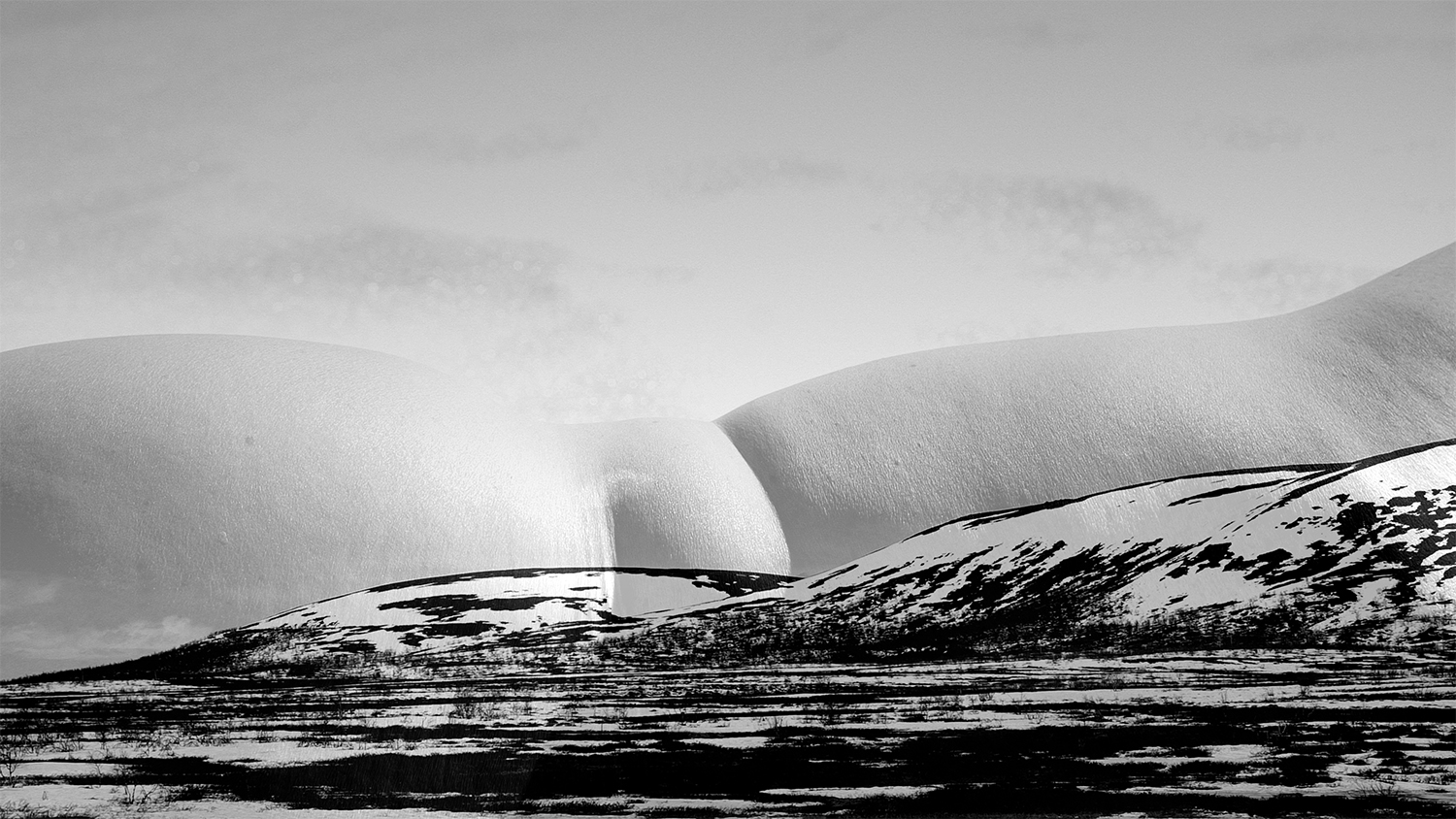
EANA is a Sami word for land, soil, ground or property. The camera pans slowly, capturing an expansive landscape rendered in black and white. The mountains which form the background gradually assume the contours of a reclining woman. The fact that her body is aged and scarred has significance as a reference to the important role of “elders” in many indigenous cultures.
EANA embodies the symbiotic relationship between the human and her habitat. Like all living organisms, she is part of an intricate interplay of dependencies. The air that embraces her body simultaneously flows inside her, as a prerequisite for life.
A holistic understanding of the living world has shaped indigenous cultures all over the world, so also in Sápmi *. This ancient knowledge has gradually been suppressed by processes of colonisation and exploitation. The expansion of hydropower and mining industries has often gone hand in hand with reckless displacements of the sami population, causing wounds in human souls as well as in the surrounding nature. With EANA, Hilde Skancke Pedersen calls for reflection on the rights of indigenous peoples to their land, and the importance of protecting these lands from further exploitation.
* The area comprising the Sami historical settlement; parts of Sweden, Norway, Finland
and the Kola Peninsula in Russia.
Photography from the Moderna Museet Collection
Hans Hammarskiöld, b. 1925 in Sweden, died 2012 in Sweden
Tuija Lindström, b. 1950 in Finland, died 2017 in Sweden

A woman floats on her back in a dark forest lake. She holds her ankles behind her body so that her torso lifts upwards and breaks the water surface in an arch. Her eyes are closed and she seems completely absorbed with herself.
Maria in an Arch (1991) belongs to the Moderna Museet Collection and is part of the influential photographer Tuija Lindström’s most noted photographic series: The Women at Bull´s Lake. The series was created during a summer evening on Värmdö, outside of Stockholm, when the artist and her friends went to the forest lake to swim. Lindström photographed her friends’ naked bodies in the dark water, someone in a fetal position, another outstretched as a crucifix or as here, floating in an arch.
Also from the collection is a selection of photographs by Hans Hammarskiöld. One of these depicts a little girl, Erica (1987). Wearing only her night shirt, she stands in the grass with her face deeply burrowed into a flower. The photograph captures the very moment when she is taking a deep breath through her nose , filling her entire body with the scent and essence of the flower. Both of these images are characterized by strong contrasts between light and darkness and both capture a profound encounter between the sensuous body and the surrounding nature. While the little child is curiously exploring her habitat, the woman lets the water hold both her body and consciousness.
Ziggy and the Starfish
Anne Duk Hee Jordan, b. 1978 in Korea
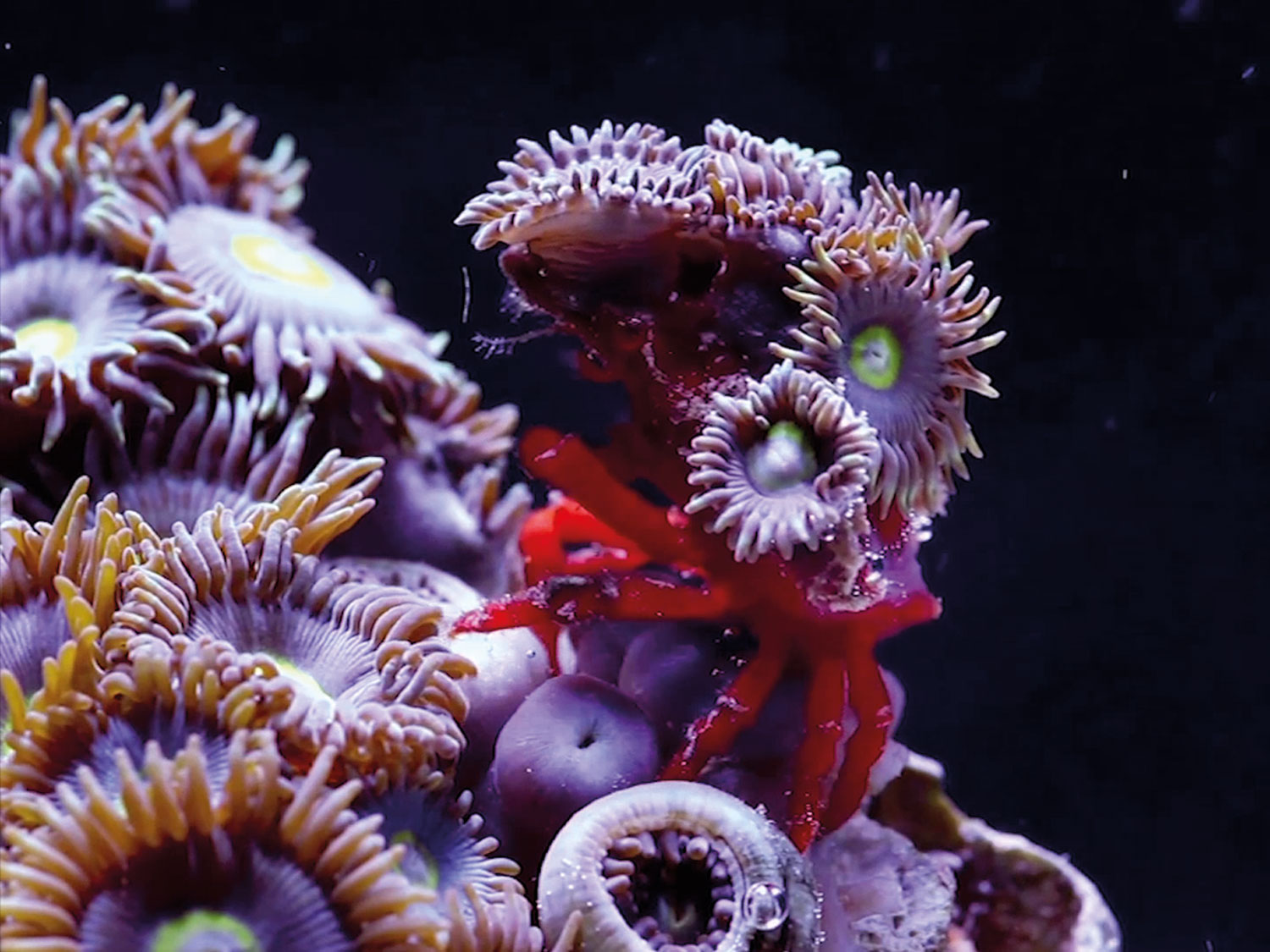
Ziggy and the Starfish invites us to marvel at the sexual diversity and ingenuity found on the ocean floor. In the video installation we encounter marine organisms in the process of seducing and mating with each other. The suggestive image flow is accompanied by music mixed with human sounds of physical enjoyment.
This intimate and wet world of voracious, heartfelt and performative games is entered with both humor and seriousness. The work has ties to the artist’s longstanding interest in the human impact on the world’s seas. Environmental changes have greatly affected the sexuality of many marine animals, whom in various creative ways have adapted to new existential conditions.
The film’s title, Ziggy and the Starfish, is inspired by David Bowie’s fictional character Ziggy Stardust – an androgynous, bisexual and promiscuous Martian. In this context, Ziggy stands for the sexual diversity of the ocean – at the same time strange, different and weirdly familiar. The starfish is an ancient asexual and self-reproducing animal, and as such functions as a counterpart to Ziggy.
The work zooms into a marine microcosm and is part of an evocative tale on reproduction, decay and sexuality in relation to time and human impact.
Dandelion, Birch Mask, Crane fly, and other works
Cecilia Edefalk, b. 1954 in Sweden
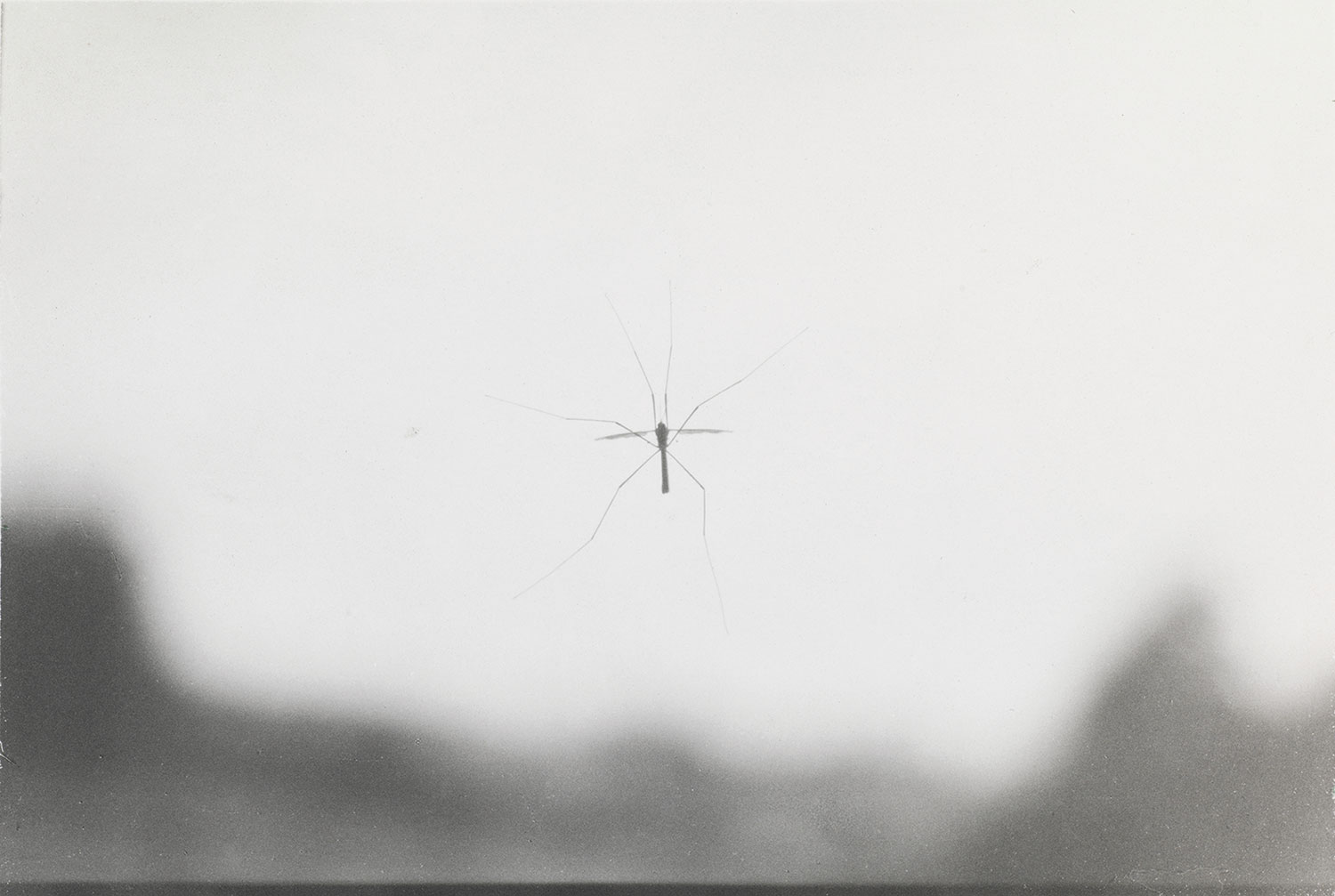
Cecilia Edefalk’s artistic practice evolves from nature, back to which it can also recede, take on new forms, die and be resurrected. Out of an ancient mask depicting the Roman emperor Marcus Aurelius (121-180 A.D.) grows a birch branch in bronze. The mask has also generated a cyclic series of paintings in which it is depicted from the same angles as the moon appears in its orbit around the earth.
Marcus Aurelius lives on today as a stoic thinker, convinced that the cosmos was a round conscious animal and that God existed within everything and everyone. But what do we really mean by God? Renaissance philosopher Giardano Bruno (1548-1600) understood God as the movement in matter which is constantly taking new forms. This concept of God, which for its time was radical, can provide interesting entry points into Edefalk’s artistic practice. In a distinctive way she approaches the magic which creates life itself.
The dandelion blowball embodies, in Edefalk’s ouvre, how death begets life. How something which once was, gets dissolved and dispersed, and then generates new forms. A crane fly on a window pane marks the interface which separates the viewer from the surrounding landscape. Its long legs appear on the glass like cracks, perhaps a reminder that the division between the human and the more-than-human world is an illusion, that nature is inside of us and we are inside of it.
O Horizon
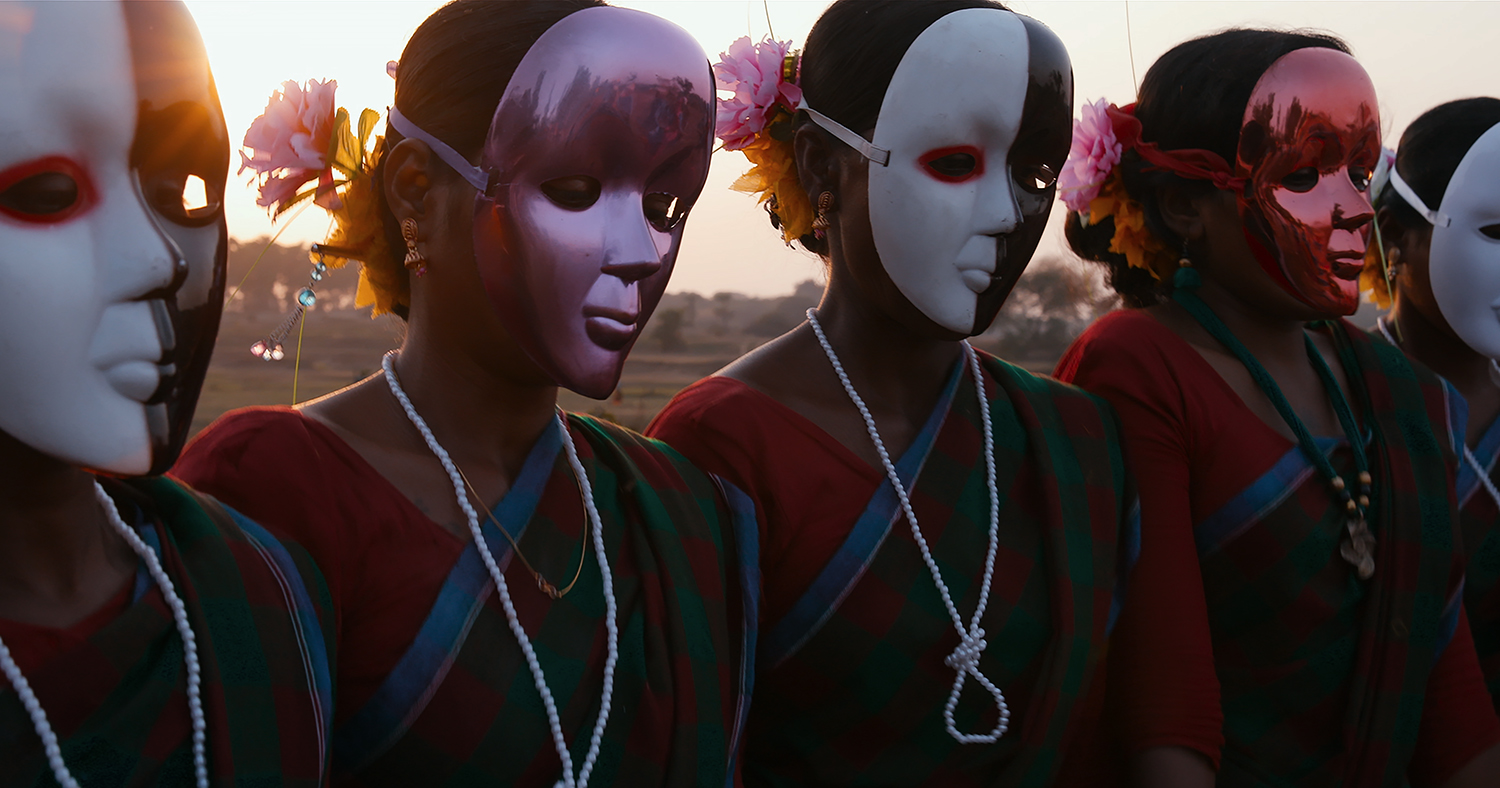
The Otolith Group consists of Anjalika Sagar and Kodwo Eshun. Their latest video, O Horizon, reflects their interest in the influential intellectual Rabindranath Tagore (1861–1941), a celebrated poet, artist, writer and philosopher. A radical voice within the Indian politics of his time, Tagore developed a vision of an educational model that, in contrast to the colonial school system which he criticized for merely addressing the analytical intellect, would understand the human as a sensuous being.
A sense of oneness with nature is, according to the Tagorean way of thinking, the first step towards learning. To attain this, an educational curriculum should revolve around nature, and classes should be held under trees or while walking in the open air. The indigenous Santals inspired Tagore´s experimental ideas and in 1921 he founded his own university, Visva-Bharati, a few miles outside Calcutta. His ambition was to foster a holistic subjectivity and to encourage creative expression and inter cultural exchange.
The video O Horizon presents multiple facets of Tagore’s ecosophical pedagogy manifested in and through poetry, music, dance, and architecture. In soil sciences, the term O Horizon refers to the surface layer of the soil. As a title, it might also be understood as a call to consciousness of the endangered earth and the imperiled sky.
The Giant Clam
Ingela Ihrman, b. 1985 in Sweden
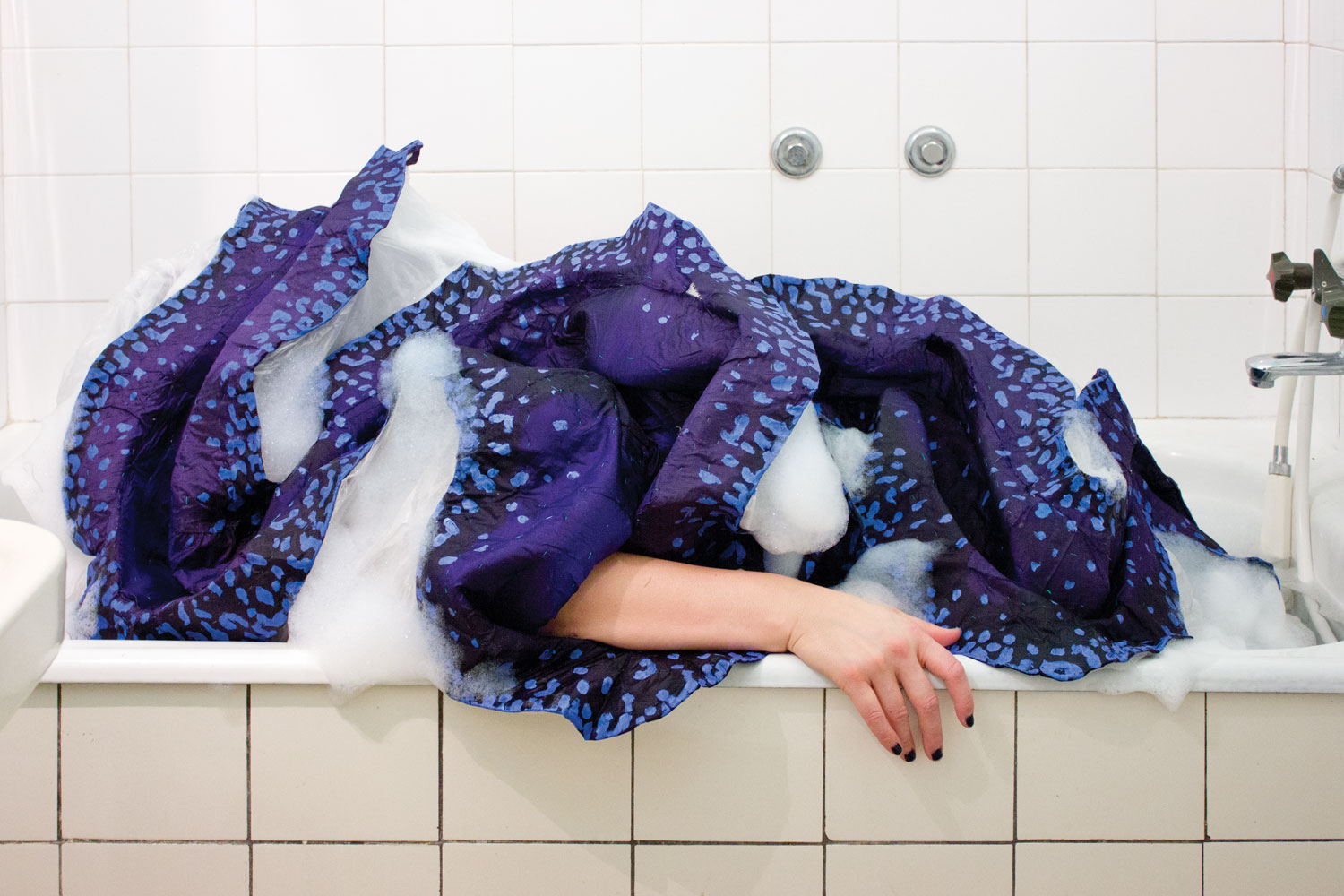
During the last weekend of the exhibition visitors are welcome to a reading performance in the Giant Clam’s flat in the Seved neighbourhood in Malmö. The artist Ingela Ihrman will dress in her Giant Clam mantle of blue silk, acrylic paint and various kinds of plastic, step down into the foamy suds of the alcove bathtub in the partly tiled bathroom – the home’s inner ocean – and read texts on the origin of life from the self-published local newspaper Seaweedsbladet #1.
Meanwhile, in the bedroom The Flower Coral and the Anus Anemone is on display. The video takes place on the bottom of the ocean where Ingela Ihrman encounters various marine creatures. The clips were recorded while on a field working trip on the Andaman Islands off the coast of India, in February 2016.
“When wearing the cloak, my body becomes the soft internal organs of the giant clam, while the bathtub I´m resting in forms its two hard bivalves. The hot water from the tap, rising and falling as I fill up and empty the tub, is the alternation of the tides, ebb and flow. When I finish bathing, I rise from the foam, just like Aphrodite did when she was born.”
Limited number of seats. Tickets to The Giant Clam will be released on February 15, 2020.
Monstra
Performance by Elisabete Finger and Manuela Eichner.
Co-created and performed by Bárbara Elias, Danielli Mendes,
Josefa Pereira, Mariana Costa and Patrícia Bergantin.
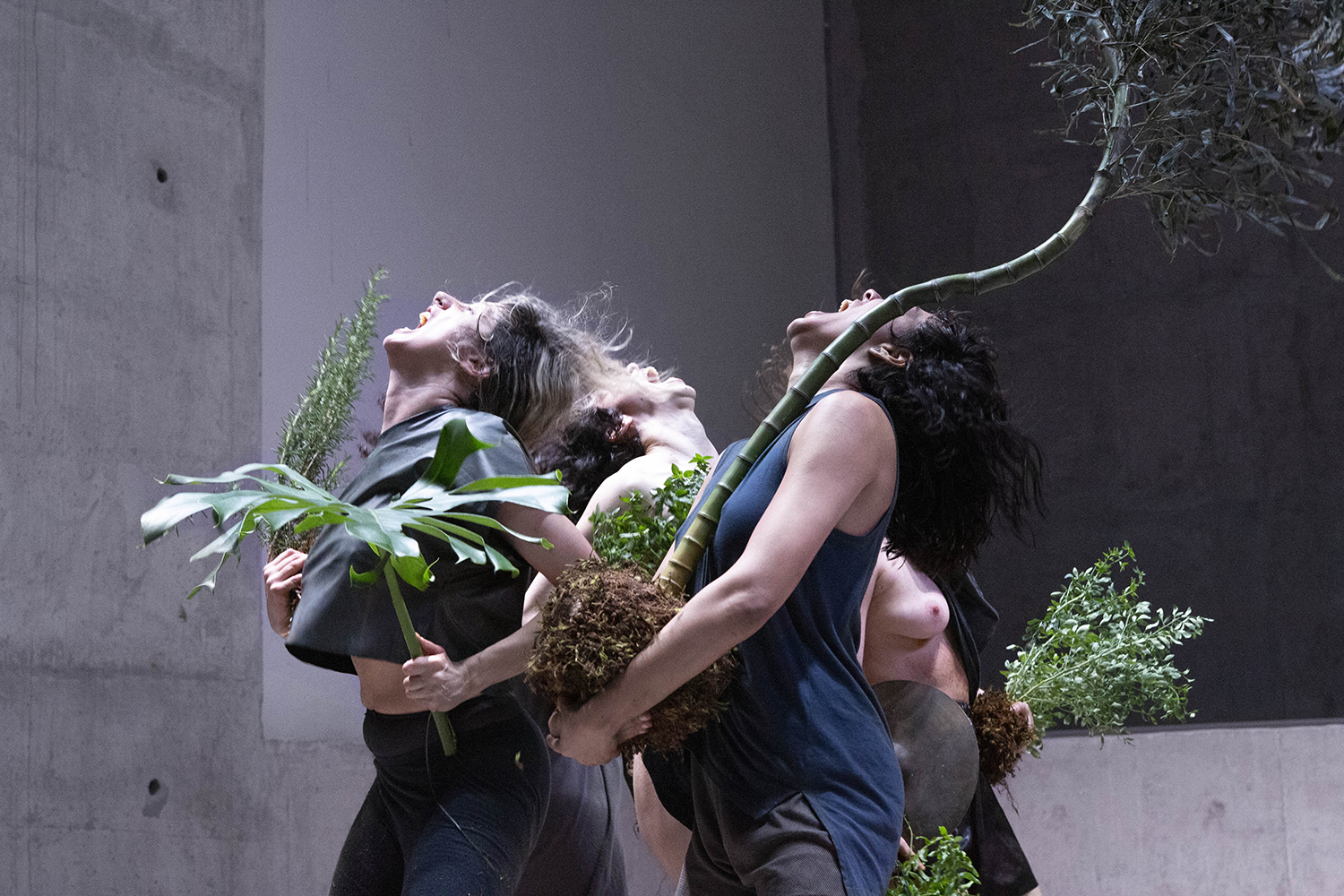
Monstra is danced by five women and five plants. The choreographers, Elisabete Finger and Manuela Eichner refer to the performance as a choreography-collage, made up by “independent choreographic cells – that attach and detach from each other rather brutally, as if snipped by scissors.”
Overwhelming in its physicality, the work elicits thoughts around our complex relationship to nature as well as to sexuality and gender.
In many cultures, the earth has been celebrated as a woman or womb, referred to as Mother Earth. However women´s connection to nature has throughout history also been severely punished as witchcraft. In a format evoking a ritual, Monstra juxtaposes the classical with the absurd, the organic with the artificial, in a way that makes manifest many of our cultures’ arbitrary ideas concerning acceptable female behavior and domesticated versus wild nature.
Throughout the performance, the bodies of women and plants become progressively more wild, unpredictable, empowered and potentially also dangerous. In the creators’ words: ”Within each choreographic block there’s a common enunciation, but each plant-person assembly responds distinctively, building a non-totality with every new cut: a collage, a community, an ecosystem, a MONSTER.”
* “Monstra” is an invented word standing for the feminine of Monster in Portuguese (Monster is always masculine in grammatical Portuguese).

